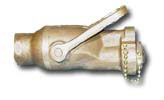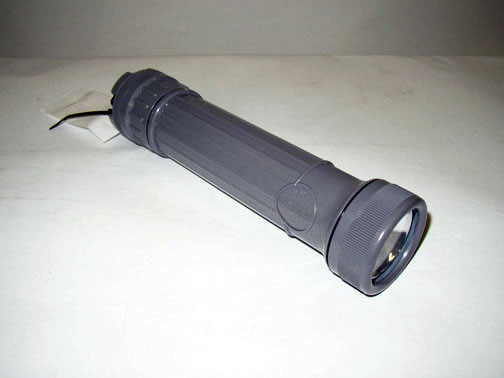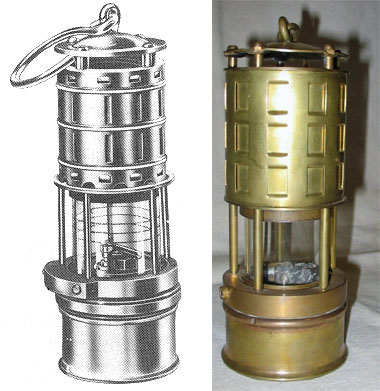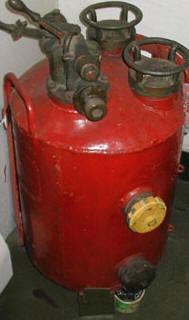The duplex pressure proportioner was in service during
WWII and until the 1970s. When installed, it was always
near main or auxiliary machinery spaces, flight and helo
decks, and hangars or fuel pump rooms. Portable duplex
pressure proportioners were located near main deck
passageways and passageways near pump rooms and
auxiliary machinery spaces, such as emergency diesel
generator rooms. The purpose of the steel duplex
cylinder unit was for holding a mechanical foam solution
and adding in the proper proportion to a water stream at
the time of a class “B” fire. In order to provide a
continuous or nearly continuous flow of the mechanical
foam stream to the fire, the cylinders had an upper and
lower chamber. During a fire, one of these chambers was
filled or was being filled while the other was in use.
The contents of one chamber held 10 gallons of
mechanical foam and lasted approximately three minutes.
This produced 1,600 gallons of foam solution as long as
the inlet pressure remained at least 75 psi. For the
operation of duplex pressure proportioners aboard naval
vessels, water under pressure was admitted to a manifold
at the top of the cylinder. A portion of the water was
released into the main part of the cylinder, where it
exerted pressure on the foam solution. As a result of
the pressure, the solution was forced up through a
narrow tube that lead from the bottom of the cylinder to
the top. This allowed the 6% solution to feed into the
stream leaving the cylinder. This process constituted
the “proportioning” that gave the device its name. From
the duplex pressure proportioner the mechanical
foam-bearing stream was conveyed in up to two 50-foot
lengths of 1 ½-inch fire hose through a mechanical foam
nozzle, a specially designed nozzle that entrained air
through an aspirating cage. The preferred pressure at
the inlet on the proportioner was 75 to 100 psi. When
operating the duplex pressure proportioner, the timer
could be started only after the pressure gauge on the
proportioner reached 75 pounds or more. The timer was
started by throwing the valve to the right or left
(upper/lower compartment). When the timer bell sounded,
meaning the U/L tank or compartment was near empty, the
operator shifted to the opposite side. The used
compartment could then be refilled (using one of two
5-gallon cans of mechanical foam standing by), the timer
reset, and so on, until the fire was out. The cap for
the refill opening had a spike attached so the
firefighter could puncture a hole in the foam can to
admit air to allow a free flow of the liquid. The duplex
pressure proportioner weighed 119 pounds without the
foam and required two personnel to transport the
portable unit. Planned maintenance (PM) under the
Current Ships Maintenance Plan (CSMP) and repairs were
made by damage control personnel. In some cases, repairs
were made during overhaul or in port availabilities by
technicians at maintenance facilities ashore. |




